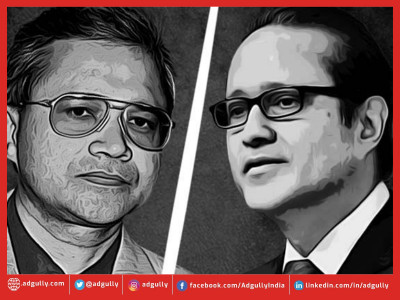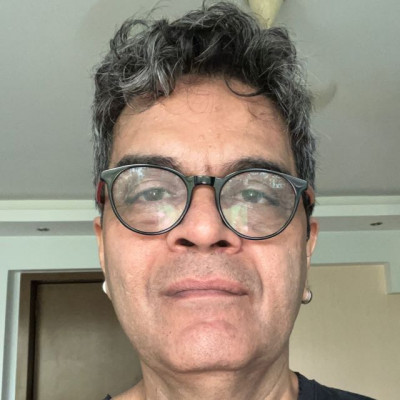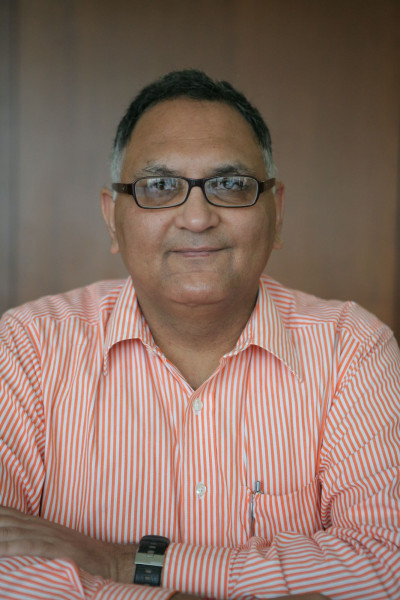Anatomy of a split: Analysts weigh in on the Times Group under the Jain brothers
In one of the largest splits in India’s media industry, the Times Group is undergoing a strategic split as the long-standing dispute between brothers Samir Jain and Vineet Jain reaches a resolution. While there is no official confirmation as yet, the industry is abuzz with news about the split in India’s leading media conglomerate. According to reports, following the emergence of reports regarding the division of assets, Bennett Coleman and Company Ltd (BCCL) issued an internal statement to its key management on Sunday. The statement, communicated by BCCL’s Company Secretary Kausik Nath, emphasised that the speculations in the media regarding the company’s reorganisation were incorrect and should not be relied upon. Nath further highlighted that social media platforms have been a source of speculative and inaccurate information.
However, as the partition of assets between Samir and VIneet Jain unfolds, experts predict a relatively smooth transition, with minimal drama surrounding the split. Drawing parallels to major corporate divisions, such as News Corp’s separation into News and Fox, observers contemplate the longevity of the residual newspaper business and its ability to navigate the challenges of the next generation. However, given the Jain brothers’ legacy, their commitment to quality, and the continued success of ventures like Times Internet, the media landscape can expect both Samir and Vineet Jain to leave an indelible mark on the industry, albeit in different ways.
Also read:
Times Group split: A new era of focused leadership begins
In this indepth report, Adgully seeks to delve deeper into the story of the Jain brothers’ split, exploring the potential implications for their media empire. Through the lens of industry experts, we unravel the intertwined threads of personal dynamics, professional choices, and the shifting paradigms of media business, painting a comprehensive picture of this captivating chapter in Indian media history.
Long time in the making
The parting has been in the making for a long period of time; it happened over a long haul, points out senior media analyst Paritosh Joshi. There is nothing surprising about it. It had not created any kind of flutter, he says, adding this separation was not entirely unexpected, given the brothers’ distinct lifestyles, interests, and visions for their business.
“Such partitions are not uncommon. We saw similar partitions in the ABP Group or the Bhaskar Group. People want to have control and their own ability to run business. Splitting of assets – if it can happen to Ambani – can happen to anybody. When the Jain brothers’ mother was there, all the assets used to be under her command. After her passing, it was obvious that assets would be divided among the brothers. And Samir and Vineet have different lives and different interests in life. They lived very differently – Vineet lives mostly in Mumbai and Samir in Delhi. Samir is more from the old world and he is more familiar with the newspaper business. Whereas Vineet has been involved with their newer ventures; they have their own angel investment arms, outdoor business, etc.,” says Joshi, asserting that the partition will go smoothly.
He does not think there will be much of a drama around it.
The distribution looks just and logical to me, says digital and new media advisor Sanjay Trehan. “The print products are now aligned to the mothership in what is increasingly becoming a converged ecosystem and will draw from each other’s strengths. And the broadcast, entertainment and other digital products will look at consolidation and exploration of growth opportunities seeking new and younger audiences. In all, it may actually end up creating disproportionate value for the media juggernaut that the Times Group is. Who knows its new media forays may reach other parts of the world. In all, it’s an exciting time for the Group and I believe it will be a blue sky replete with myriad possibilities,” Trehan says in an optimistic tone.
Business houses getting divided is not something new that we are experiencing for the first time; it is not a big deal, points out a senior print media veteran, who prefers anonymity.
“We have seen that in the Indian corporate world before. The RP Goenka Group is an example. Similarly, there are other family organisations with multiple brothers. It took three years for them to work out something. It is very complicated. Instead of wasting time on bickering it is better to divide and focus on their work,” he adds.
The sign of the Times
Samir Jain had no qualms in saying that a newspaper “should be sold like a bar of soap”. The brutally honest statement raised many eyebrows with idealists squirming in indignation. But that was the time when the print media landscape was changing, with the Times Group standing at the vanguard of that change. The shift from being a journalism-driven entity to an advertising-driven business was palpable, and it coincided with India opening up its doors to the world outside. The time was ripe.
Over the years, Paritosh Joshi observes, the Jain brothers had assembled a team of talented professionals to manage various aspects of their business, with Pradip Guha’s transformative influence being particularly noteworthy.
“Guha played a pivotal role in shifting The Times of India’s focus from being an editorial-driven enterprise to an advertising-driven powerhouse. By emphasising on the creation of high-quality advertising inventory, Guha positioned the media giant to capitalise on the liberalisation of India’s economy during the 1990’s,” notes Joshi. This strategic shift, spearheaded by Samir Jain and supported by Guha, helped redefine the media industry, prompting other media groups to re-evaluate their priorities and adopt a similar approach.
“And The Times of India showed it to the whole industry. After that, everybody in the Indian media business realised that what we are really doing in the media business is creating advertising inventory. They were creating advertising inventory even before that. In many business groups from north to south, from Punjab Kesari to Manorama in the South, there was a sense that there was a purpose in journalism; the responsibility and the right to defend democracy and stuff like that; journalism being the watchdog of democracy. Pradip Guha changed all that. He systematically changed the concept of the media being the fourth pillar of democracy. He toned down the whole emphasis on editorial and gave emphasis on offering high-quality advertising inventory. And he did it at the right time, because India was at the process of liberalisation. More and more brands were coming in the market. It was a process led more by Samir Jain than Vineet, who was much younger at that point. It was Samir Jain and Guha under the wise eyes of his mother. They did that transformation in the 90’s,” said Joshi.
So what does this entail for the overall Group and the industry in general?
According to the media veteran, the primary drawback of the split is its impact on the markets. “Specifically, I am referring to the demand side, which includes advertisers and suppliers. When selling separately, different divisions may encounter difficulties in achieving synergistic benefits. Some argue that selling separately can lead to improved average revenue per user (ARPU). However, it is uncertain whether ARPU will indeed increase, as the starting point should be the consumer's perspective. Consumers are often platform-agnostic or format-neutral, and advertisers adjust their strategies accordingly,” he points out.
Two distinctive personalities
The dynamics between Samir Jain and Vineet Jain have showcased noticeable differences in lifestyle and business strategies. The divergent paths pursued by Samir and Vineet Jain have garnered media scrutiny. The question arises as to how the newly divided assets will be managed, considering the ascetic-like aura of Samir and the flamboyant personality of Vineet. The contrasting personalities and business philosophies of the two brothers can shape the future direction of their respective ventures and create a distinct dynamic within their media empire.
When asked about the brothers’ personalities, the media veteran emphatically states, “This is a misperception, Vineet Jain is not flamboyant.” Continuing further, he adds, “The brothers are very simple. Vineet might have been in the glamour business with the Bombay Times Fashion show, Femina and all. He is used to working hard and partying hard as well. But he is very focused on his business, especially when he went into television, radio, and Internet, which was too early for India. But definitely he has realised that media will slowly become omni-channel.”
Differences in lifestyle and business approach of Samir and Vineet Jain have long been evident. While Samir, who resides in Delhi, is rooted in the traditional newspaper business, Vineet has been actively involved in newer ventures, including angel investments and the outdoor business, primarily operating from Mumbai. Paritosh Joshi emphasises that these divergent paths, coupled with their unique personal lives, ultimately paved the way for the division of assets after the passing of their mother, who had previously held the reins of the family’s media empire.
“Samir wears ‘sadhu type’ super simple clothes and is very taciturn. He doesn’t talk much, is very quiet, and projects an extremely spartan image. But he is a sharp businessman who works with high-quality marketing professionals. They’ve had high-quality business professionals running their business. For example, their outdoor business was run by Sharath Chandra. These high-quality sharp minds have very good work for the group,” says Joshi.
Joshi feels that it is crucial to separate personal flamboyance from corporate governance when examining the business acumen of the Jain brothers. “Vineet’s inclination towards a glamorous lifestyle in Mumbai should not overshadow his ability to run the business effectively, just as Samir’s understated demeanour and traditional approach do not diminish his sharp business acumen.”
Joshi is of the opinion that individual flamboyance and corporate governance are not necessarily the same thing. A flamboyant lifestyle, according to him, is a social statement; and how the business gets run is a business decision.
“I don’t think one should confuse his lifestyle with his business acumen or style of running the business; both are independent of each other. Yes, he chose to live in Mumbai rather than in Delhi, surrounded by the film industry. When the magazine business was alive and kicking, he was very much part of the glamour or the glitterati. Over a period of time, they’ve had very high-quality decent professional managers in different parts of the business,” Joshi added.
Future of Times Group’s print business
Analysts say that Samir Jain, who got the print business, will have to navigate the print media landscape, which is undergoing significant transformations, primarily driven by the evolving preferences and habits of consumers, particularly the younger generation.
“Samir is single-handedly responsible for most innovations that one has seen in the newspaper industry in India and I don’t see why the onward march of ‘consolidation and gains’ won’t continue,” opines Sanjay Trehan.
“The alignment of digital assets with the print competencies and efficiencies would foster an enabling ecosystem that will work to the advantage of brands and consumers alike,” he points out.
The Times of India, in the words of Paritosh Joshi, enjoys an early-mover advantage and can sustain the newspaper business in either digital or physical format within the country. This advantage is expected to endure over time. Several traditional newspaper businesses have transformed into real estate enterprises, as exemplified by the case of The Statesman, he adds.
“In a similar vein, Bennett Coleman also possesses remarkable real estate assets across the country. It will be fascinating to witness how the division of physical assets and properties takes place. For instance, the The Times of India building in Mumbai is likely to hold considerably more value than the Bahadurshah Zafar Road building in Delhi. The aspect of real estate allocation will be an intriguing aspect to observe, as it represents tangible value rather than virtual or goodwill assets,” notes Joshi.
As the format of print delivery faces a decline, it becomes crucial to assess the future prospects and challenges faced by this traditional medium, says the media veteran.
“The shift towards digital platforms, such as Facebook and Google, has reshaped the advertising landscape, causing print to lose its top position. Moreover, the rise of general entertainment channels and the fragmentation of media further contribute to the need for print media to reinvent its business model. In this era of information overload, where distinguishing between real and fake news becomes increasingly difficult, Samir will have to navigate the complexities of a changing environment,” says the media veteran.
If we examine the print ecosystem, we can observe a decline in the format of delivery itself, he points out. “Although I personally enjoy reading newspapers, I believe that future generations, particularly Gen Z, may not be fond of a fixed format. When I entered the print business, it was highly advertising-driven, and it held a prominent position. However, reports from EY and KPMG indicate that print has fallen to the fourth or fifth position, with digital platforms like Facebook, Google, and others claiming the top spot. General entertainment channels have also gained significant traction, highlighting a decline in the effectiveness or appeal of traditional delivery formats,” he points out.
The media veteran feels that the print media must reinvent its model to stay relevant. The underlying challenge for news channels, newspapers, and similar entities is their business model, which heavily relies on advertisers. However, he adds, advertisers increasingly prioritise performance marketing due to limited budgets, numerous choices, fragmented consumer attention, and the overall fragmentation of media.
“Inter-category audience transfer is becoming more prevalent, and any disruption in the advertising landscape affects the entire media industry. When advertisers face challenges, the media industry feels the impact. The current database is so distorted that determining return on investment (RoI) becomes difficult. While print still boasts an engaged audience, in today’s environment of ‘WhatsApp universities’, deep fakes, and even ChatGPT generating fake news (as ChatGPT cannot differentiate between genuine and fake information), it is becoming increasingly challenging. There is an overwhelming abundance of information available, yet a Reuters study indicates that print remains the number one source. However, unlike in other countries, print media in this country may have a slightly longer lifespan,” says the veteran.
Print, he adds, does have a future, but relying excessively on advertising will not be effective. He feels that print media needs to reinvent and redefine its business model. “It is essential to recognize that the world we inherited in 1980 is vastly different from the one we currently live in,” he says.
New-media and other businesses
From a business perspective, the broadcast and over-the-top (OTT) businesses offer a future-ready proposition. However, for companies in the newspaper or magazine industry, it presents a more challenging scenario.
You cannot make a lot of money because the major share of internet ad revenue is still enjoyed by FB and Google, says the veteran. Everyone is in the mood of cost optimisation.
Meanwhile, Sanjay Trehan believes that it augurs well for the Times’ broadcast, radio and digital businesses as Vineet Jain is not only an early adopter of new media, but has also helped shape it with exemplary commitment and foresight.
“In digital, he has been a visionary and led by example. He has also been hands-on in terms of design and UX, and also responsible for considerable talent acquisition in these businesses. So, I see more opportunities and less challenges. The new media businesses may see significant scale up and consolidation under his leadership,” says Trehan.
Times Internet, as a thriving internet technology company, holds significant value within the Times Group, and as such the equitable distribution of Times Internet’s assets between the two brothers can have an impact on their respective digital strategies and growth prospects.
Trehan sees more alignment of broadcast, radio and entertainment products, and he says that in a device- and platform-agnostic world, the creation of more holistic and seamless offerings that will attract unexplored audiences, be it in new geographies or languages.
“I also think narrowcasting of some products, like music, entertainment and sports to cater to younger audiences, will unleash fresh opportunities. Vineet Jain’s leadership will play a pivotal role in unlocking new opportunities and to smoothen the rough terrain. He believed in the Internet from the early days and has helped shape Times Internet into a formidable force. So, no worries there, only emerging frontiers to conquer,” he says.
The print business worldwide is grappling with the challenge of adapting to a digital-first world, says Joshi. In this regard, he adds, Times Internet appears to be more closely aligned with their print business rather than their broadcast business, given the latter’s existing digital infrastructure. According to him, it is likely that a geographical partition will take place, where operations in Mumbai and Delhi will be maintained separately.
However, the Radio business is in trouble because it is hundred per cent ad-driven, notes the veteran. “While he understands the content, he does not have a vehicle to implement his vision. I have a feeling that Vineet has to expand the bouquet. Even GEC TV is under pressure. While he is futuristic in terms of understanding media, he needs some more vehicles and the bouquet needs to be expanded to realise his own full potential,” he concludes.









Share
Facebook
YouTube
Tweet
Twitter
LinkedIn